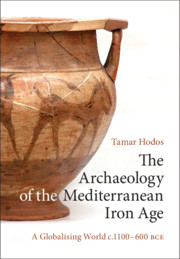Book contents
- The Archaeology of the Mediterranean Iron Age
- The Archaeology of the Mediterranean Iron Age
- Copyright page
- Dedication
- Contents
- Illustrations
- Preface
- Acknowledgements
- One Interpreting the Mediterranean
- Two Chronologies and Histories
- Three The Movement of People
- Four Contacts and Exchanges
- Five Urbanisation
- Six Written Words
- Seven Conclusions
- Notes
- References
- Index
Five - Urbanisation
Published online by Cambridge University Press: 12 September 2020
- The Archaeology of the Mediterranean Iron Age
- The Archaeology of the Mediterranean Iron Age
- Copyright page
- Dedication
- Contents
- Illustrations
- Preface
- Acknowledgements
- One Interpreting the Mediterranean
- Two Chronologies and Histories
- Three The Movement of People
- Four Contacts and Exchanges
- Five Urbanisation
- Six Written Words
- Seven Conclusions
- Notes
- References
- Index
Summary
The origins of the city are often traced back to the fourth millennium BCE Mesopotamian city of Uruk. Thus, we should not be surprised to find that cities were a feature of the eastern Mediterranean, in particular, long before the dawn of the Iron Age. Indeed, Mediterranean archaeology more widely could be described as an archaeology of urban contexts, since most sites that have been examined are of an urban nature, and for major settlements, it is usually the public spaces, including cemeteries, that have been the focus of fieldwork. Thus, we have considerable evidence pertaining to the complex built environments of antiquity. Yet the variability between the socio-political and physical characteristics of such places renders it difficult to define ‘the city’ or what it means to be urban for the Mediterranean past.
- Type
- Chapter
- Information
- The Archaeology of the Mediterranean Iron AgeA Globalising World c.1100–600 BCE, pp. 147 - 181Publisher: Cambridge University PressPrint publication year: 2020

